Ballet Arabesque – How to Perfect Your Technique
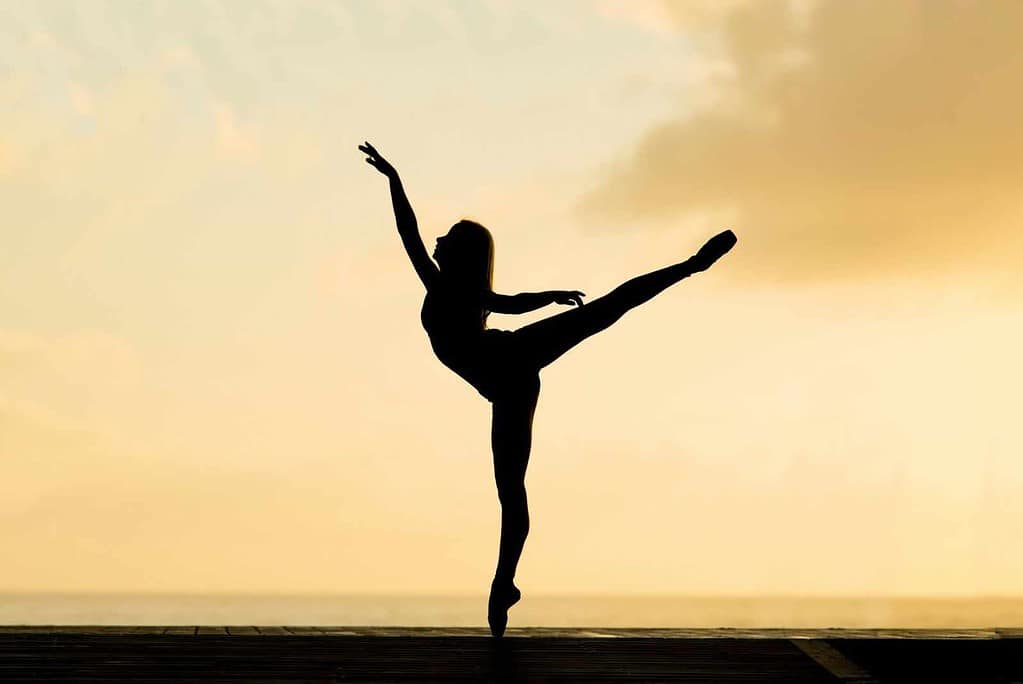
Every dancer aspires to master perfect extensions and a breathtakingly high ballet arabesque.
The arabesque is an iconic ballet position that infuses beauty and grace into what appears deceptively simple to the eye.
However, achieving a stunning arabesque requires meticulous attention to detail, precise ballet technique, and impeccable alignment.
Contrary to common belief, it’s not solely about flexibility!
While flexibility in the back, hamstrings, and hip flexors is important, the key to achieving impressive height and stability lies in building strength. Specifically in the back, hamstrings, and glutes.
Strong muscles provide the foundation and support necessary to sustain a high and controlled arabesque position.
In this blog post, I’ll provide you with beginner and professional tips to master your ballet arabesque technique.
WHAT IS A BALLET ARABESQUE?
A Ballet Arabesque is a movement where a dancer balances on one leg while lifting the other leg straight back, typically reaching 90 degrees or higher.
There are four distinct arabesque positions, each involving specific arm and shoulder epaulement (1st, 2nd, 3rd and 4th).
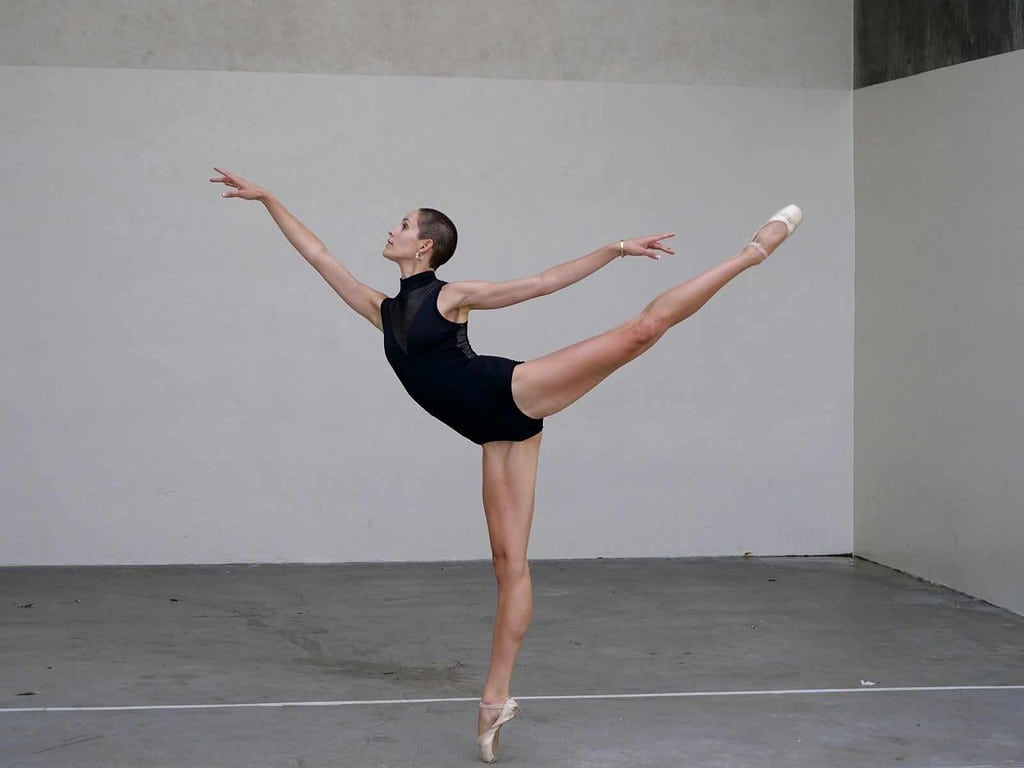
Executing an arabesque demands precise control, stability, flexibility, and strength to sustain an upright ballet posture with the back reasonably straight while extending the leg effortlessly behind the body.
COMMON BALLET ARABESQUE MISTAKES
Here are three common ballet arabesque mistakes that can be easily avoided with practice and precision.
OPENING THE HIPS TO INCREASE HEIGHT
The first common mistake during a ballet arabesque is opening the hips excessively to achieve a higher arabesque line.
This approach, often seen in styles like Balanchine, can compromise alignment and neglect proper engagement of the glutes and hamstrings.
Prioritising proper technique over height is essential for maintaining a well-aligned arabesque.
By focusing on square hips and engaging the necessary muscles, including the glutes and hamstrings (and those deep rotators for turnout), dancers can achieve an exquisitely high arabesque with correct form and ballet alignment.
SITTING IN THE BACK
The second common mistake is allowing the upper body to collapse or “sit” in the upper back.
This occurs when abdominal muscles are not properly engaged to support posture, resulting in excessive arching of the back.
This lack of support can lead to potential back-related issues due to increased pressure on the lower back.
Additionally, when dancers fail to lift out of their backs, it can cause a sinking sensation in the supporting leg, resulting in disengaged muscles and a shift of weight towards the heel.
Trust me, this makes it challenging to sustain an arabesque in the centre.
Always focus on elongating upwards rather than allowing the body to sink downwards to maintain proper alignment and stability.
LETTING THE RIBS SPLAY OUT AND OPEN
The third common mistake is when the rib cage flares out during an arabesque, which disrupts the alignment of the spine and detracts from the visual elegance of the position.
More importantly, this flaring indicates that the abdominal and back muscles are not properly engaged to provide the necessary support and posture required for a stable arabesque.
This issue often arises when the arms are not properly supported and fail to send energy out through the fingertips.
When you actively lengthen your arms to provide proper support, you’ll likely experience an immediate sensation of lengthening and reaching.
In doing so, you’ll be able to maintain a neutral ribcage position, promoting a sense of elongation through the torso.
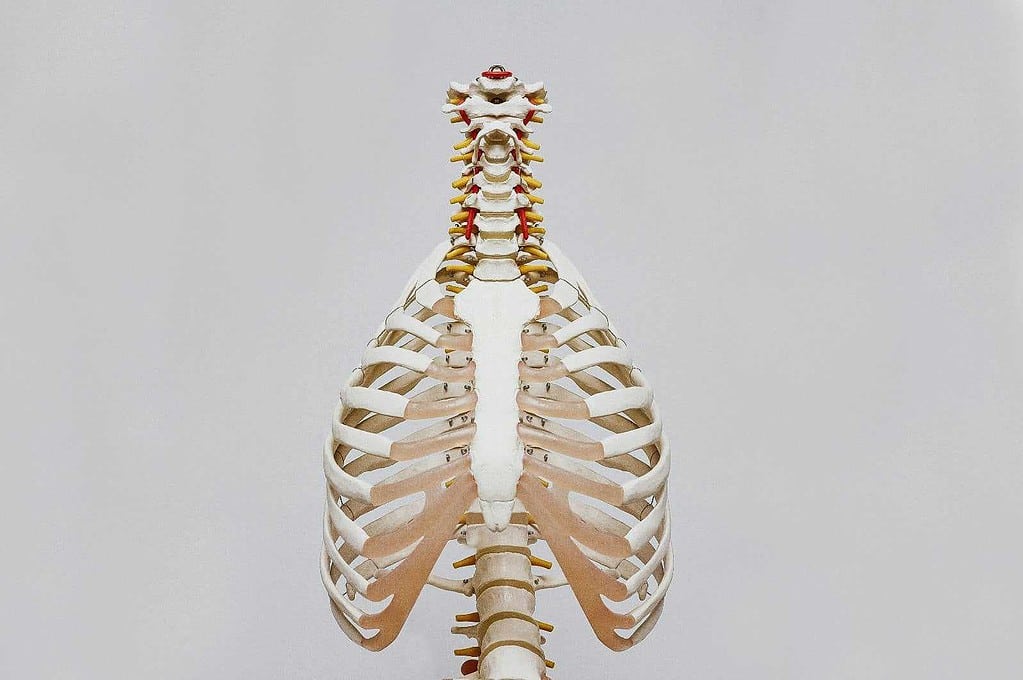
BALLET ARABESQUE TIPS FOR BEGINNER DANCERS
Here are three tips for beginner dancers to incorporate into your daily practice to achieve a correct ballet arabesque technique.
TIP 1 – IMPROVE BACK FLEXIBILITY
Enhancing flexibility is crucial for achieving a graceful and high arabesque position.
Tight muscles can limit and even restrict movement, so stretching to improve elasticity in key areas like the back, hamstrings, glutes, and hip flexors is important.
However, it’s essential to balance flexibility training with strength-building exercises to avoid overstretching which can lead to injury or reduced stability.
RECOMMENDATION
I recommend adding the following stretches to your morning warm-up or evening cool-down routine:
Remember, stretching should always be performed after a thorough warm-up with care.
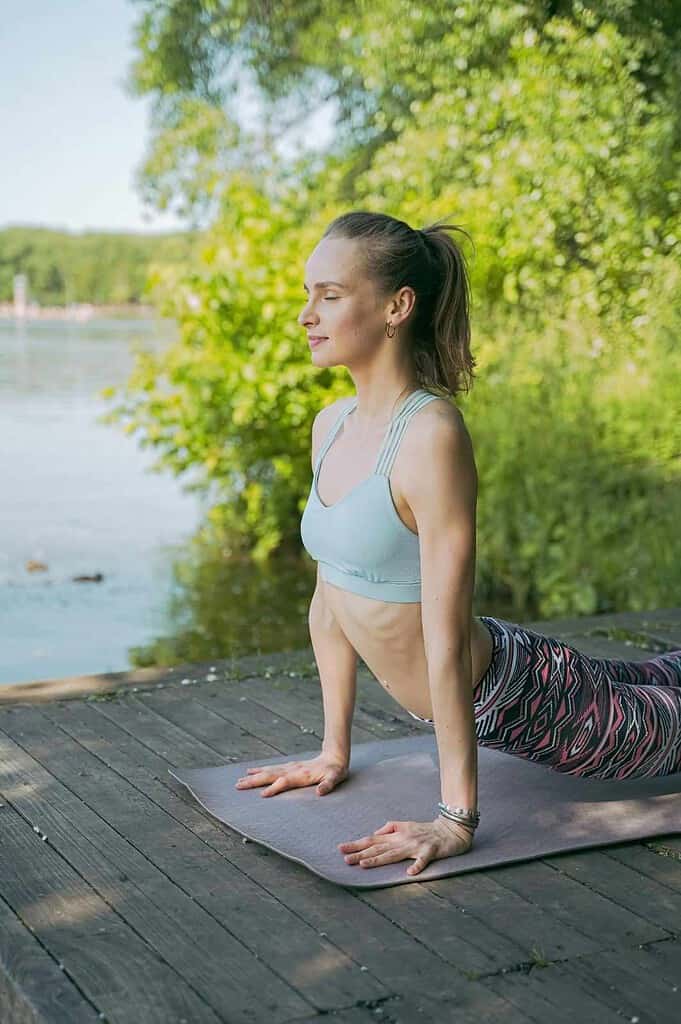
TIP 2 – THINK ABOUT LIFTING RATHER THAN CRUNCHING THE BACK
When performing a ballet arabesque, it’s important to focus on lifting through the torso rather than crunching or collapsing into the back.
This approach emphasises maintaining proper alignment and creating a beautiful line while protecting your spine.
RECOMMENDATION
To engage your abdominal muscles correctly, imagine gently drawing your belly button toward your spine to activate your deep core muscles effectively.
To strengthen this visualisation, use a stability ball for practice. Try a cobra position with extended arms held in fifth position while lying on the stability ball.
Focus on lifting and lengthening through your torso without sinking into the ball.
This exercise enhances core strength and promotes proper alignment and support, crucial for achieving a graceful and controlled arabesque.
TIP 3 – STRENGTHEN THE BACK
Building strength in the back is essential for meeting the physical demands of a beautiful arabesque position.
Strong back muscles, particularly in the upper back, help to:
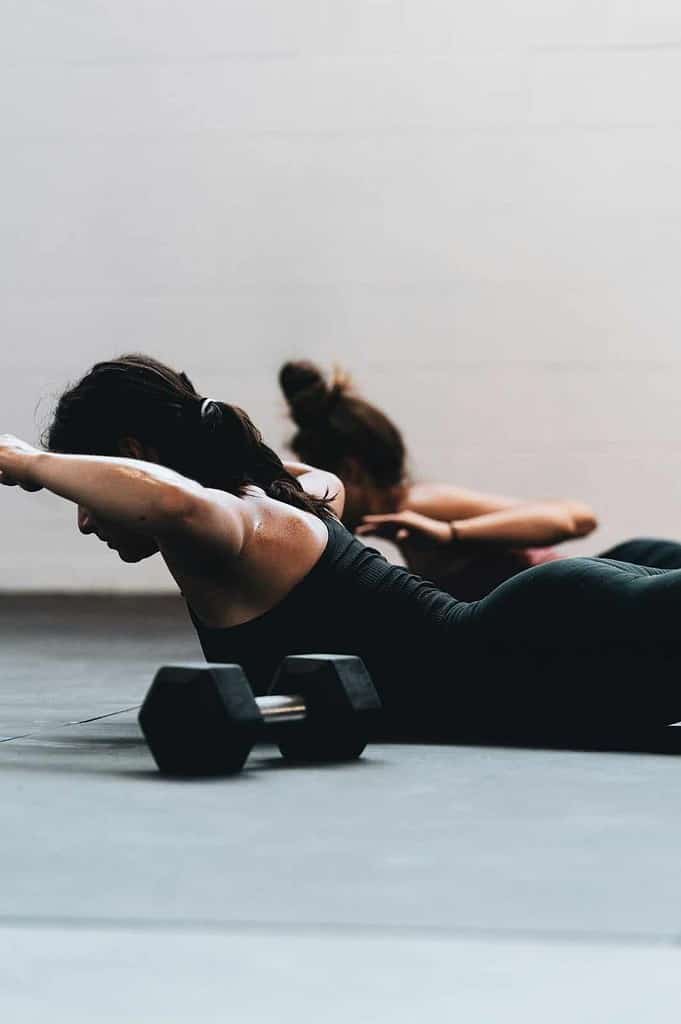
RECOMMENDATION
There are numerous beneficial Pilates exercises that you can do to help strengthen your back. I suggest adding:
These particular exercises effectively engage the back muscles while also working the legs in a raised position, resembling the movements of an arabesque.
Aim for 2 sets of 8 repetitions for each exercise.
BALLET ARABESQUE TIPS FOR ADVANCED DANCERS
Here are three tips for advanced dancers, that build on the basic principles of a ballet arabesque, that can be incorporated into your daily practise to perfect this movement further.
TIP 1 – STRENGTHEN THE HAMSTRINGS AND GLUTES
Strengthening the hamstrings and glutes plays a crucial role in supporting and extending the leg behind the body, which is key to achieving a beautiful and controlled arabesque position.
Building strength in your hamstrings and glutes enables you to lift your legs higher as well as sustain arabesque positions with greater ease (particularly during extended holds like promenades or penchés).
RECOMMENDATION
Two exercises that I particularly enjoy for strengthening the hamstrings and glutes are the:
These exercises effectively target these muscle groups and can be adapted to increase intensity and challenge.
Aim for 2 sets of 8 repetitions for each exercise.
TIP 2 – FIND THE POSITION ON THE FLOOR
Sometimes gravity works against us!
Practising your arabesque on the floor allows you to concentrate on the details of the arabesque position without the challenge of balancing on one leg.
This is an excellent way to strengthen the muscles involved in maintaining a beautiful arabesque and to reinforce correct alignment and turnout without feeling like you have tree trunks as legs.
RECOMMENDATION
Floor barre is a fantastic method for improving arabesque alignment and effectively engaging your deep rotators or turnout muscles.
When lying on your stomach, you’re unable to splay or open your ribs, which encourages you to engage your core and back muscles for stability and control.
Additionally, floor barre helps you strengthen the muscles needed to lift your legs towards the back, gradually increasing your range of motion as your muscles become stronger.
TIP 3 – PRACTISE USING A BARRE
The ballet barre is not just for your hands.
By placing your foot in an arabesque position on the barre, you can engage all muscle groups to develop strength and length throughout your body.
Ready to take your balance, flexibility, and strength to another level?
RECOMMENDATION
This exercise is particularly challenging and suitable for advanced dancers with a strong foundation in arabesque technique.
You can modify the height of the barre by using a sturdy object or furniture to start at a moderate level.
As your arabesque improves, gradually increase the height for added difficulty.
To perform this exercise:
Aim for a series of 8 repetitions to strengthen and refine your arabesque position.
Remember, adjust the height and intensity based on your skill level and progression.
WRAP UP
Looking for a quick fix for improving your arabesque?
I hate to disappoint, but there isn’t one.
Achieving a beautifully elongated arabesque requires dedicated practice and hard work, especially if you find this movement challenging.
Don’t be discouraged!
While it may take time and effort, it is possible to enhance your line and aesthetics.
However, remember that results won’t magically appear without putting in the necessary work and consistent effort.
With a positive mindset, appropriate training, and additional effort, you’ll soon see improvement in your ability to lift your legs higher and achieve that perfect arabesque.







